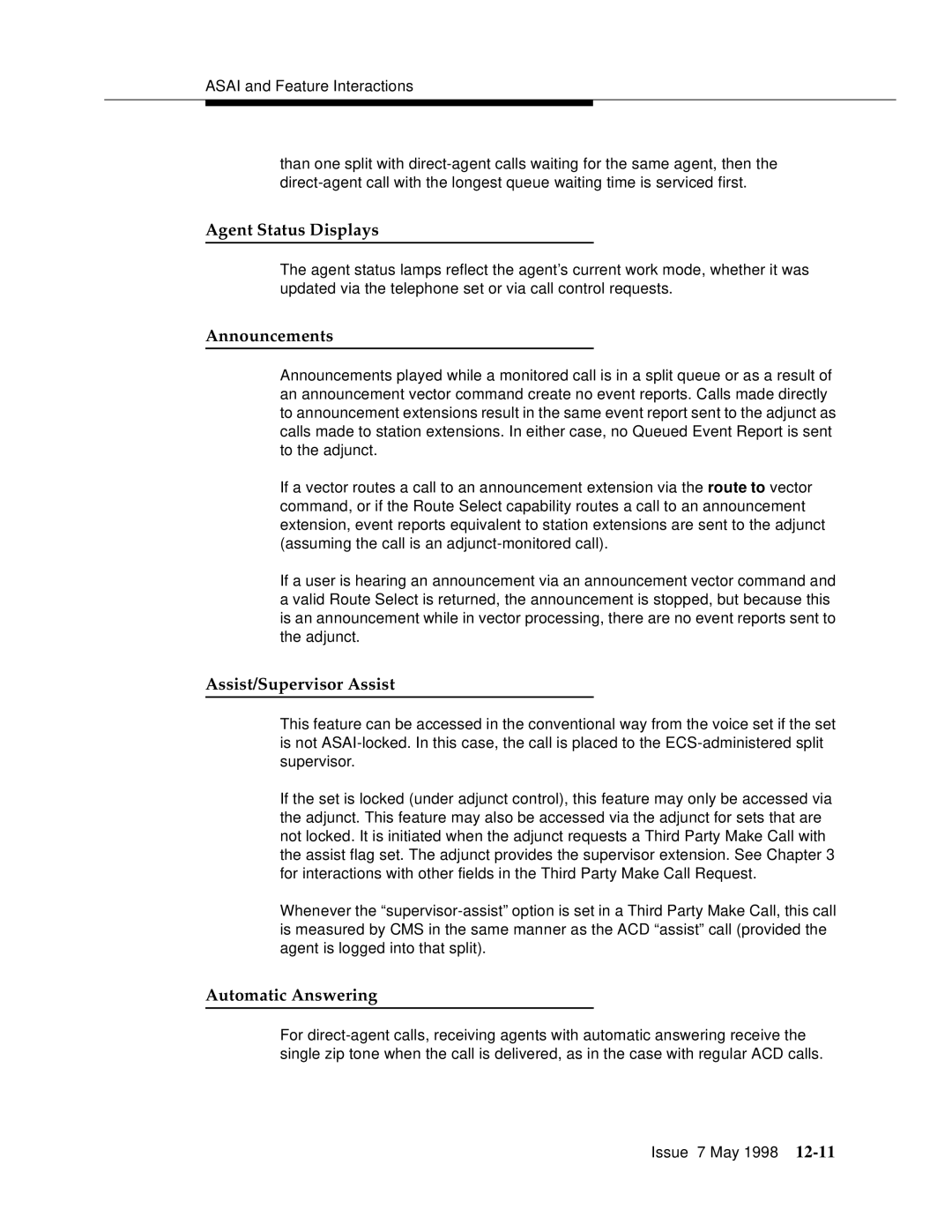
ASAI and Feature Interactions
than one split with
Agent Status Displays
The agent status lamps reflect the agent’s current work mode, whether it was updated via the telephone set or via call control requests.
Announcements
Announcements played while a monitored call is in a split queue or as a result of an announcement vector command create no event reports. Calls made directly to announcement extensions result in the same event report sent to the adjunct as calls made to station extensions. In either case, no Queued Event Report is sent to the adjunct.
If a vector routes a call to an announcement extension via the route to vector command, or if the Route Select capability routes a call to an announcement extension, event reports equivalent to station extensions are sent to the adjunct (assuming the call is an
If a user is hearing an announcement via an announcement vector command and a valid Route Select is returned, the announcement is stopped, but because this is an announcement while in vector processing, there are no event reports sent to the adjunct.
Assist/Supervisor Assist
This feature can be accessed in the conventional way from the voice set if the set is not
If the set is locked (under adjunct control), this feature may only be accessed via the adjunct. This feature may also be accessed via the adjunct for sets that are not locked. It is initiated when the adjunct requests a Third Party Make Call with the assist flag set. The adjunct provides the supervisor extension. See Chapter 3 for interactions with other fields in the Third Party Make Call Request.
Whenever the
Automatic Answering
For
